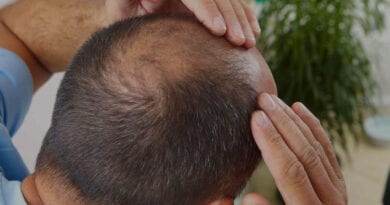Medical devices are crucial for improving the quality of life, treating various diseases, and extending human lifespans. With advancements in technology and an increasing demand for better healthcare, the medical device industry is constantly evolving and growing. As a result, there is a need for innovative medical devices that can meet the changing needs of patients and healthcare providers.
Developing an innovative medical device requires a systematic approach, involving multiple steps and stakeholders. In this guide, we will walk you through the process of developing an innovative medical device step-by-step.
Step 1: Identify the Need
The first step in developing an innovative medical device is to identify the need for it. This involves researching existing medical devices and identifying any gaps or shortcomings in current treatments. It could also involve identifying a new medical condition or an unmet need that can be addressed with a new device.
To identify the need, you can talk to healthcare professionals, conduct market research, and analyze data on disease prevalence and treatment outcomes. This step is critical as it sets the foundation for the rest of the development process.
Step 2: Define the Problem
Once you have identified the need, the next step is to define the problem that your device will solve. This involves clearly defining the target population, their needs, and how your device will address those needs. It is essential to involve end-users and stakeholders in this step to gather insights and feedback on the problem definition.
Step 3: Brainstorm Ideas
With a clear understanding of the problem, it’s time to brainstorm ideas on how to solve it. This step involves bringing together a diverse group of experts and stakeholders to generate creative solutions. It is important to have an open-minded approach and consider all possibilities during this stage.
Step 4: Concept Development
The next step is to develop a concept for your medical device based on the ideas generated in the previous step. This involves creating a prototype or a mock-up of the device to test its feasibility and functionality. It is also important to conduct market research and gather feedback from potential end-users to refine the concept.
Step 5: Design and Engineering
Once you have a solid concept, it’s time to move on to design and engineering. This stage involves turning the concept into a tangible product design that can be manufactured. All the parts and components of the device need to be carefully designed and engineered to meet the required specifications and standards.
For example, if your device requires a cable harness, you will need to work with a cable harness manufacturer to design and produce the necessary components. A cable harness is a group of wires or cables that are organized and bundled together for efficient transmission of signals or power. It plays a critical role in ensuring the proper functioning of medical devices.
Step 6: Prototype Testing
Once the device is designed and engineered, it’s time to test the prototype. This involves conducting various tests to ensure that the device meets all safety and performance requirements. Any issues discovered during this stage must be addressed before moving on to the next step.
Step 7: Regulatory Approval
The medical device industry is highly regulated, and any new device needs to go through a series of approvals before it can be marketed and sold. This step involves submitting all necessary documentation and data to regulatory bodies for review and approval. It is crucial to ensure that your device meets all regulatory standards and requirements.
Step 8: Clinical Trials
Before a medical device can be used on patients, it needs to undergo clinical trials to demonstrate its safety and effectiveness. The size and scope of clinical trials will depend on the type of device and its intended use. It is critical to have a well-designed and executed clinical trial to gather robust data on the device’s performance.
Step 9: Launch and Post-Market Surveillance
Once your device has received regulatory approval and completed clinical trials, it’s time to launch it in the market. This step involves marketing and distributing the device, as well as monitoring its performance in the real world. Post-market surveillance is crucial to identify any potential issues or adverse events that may arise.
Step 10: Continuous Improvement
The final step in developing an innovative medical device is continuous improvement. The healthcare landscape is constantly evolving, and there will always be room for improvement. It is important to gather feedback from end-users and monitor performance data to identify areas for improvement and make necessary updates to the device.
In conclusion, developing an innovative medical device requires a systematic and collaborative approach involving multiple steps and stakeholders. With careful planning, thorough research, and continuous improvement, you can create a medical device that makes a significant impact on the healthcare industry.
So don’t be afraid to think outside the box and pursue your ideas for improving healthcare through innovative medical devices.







